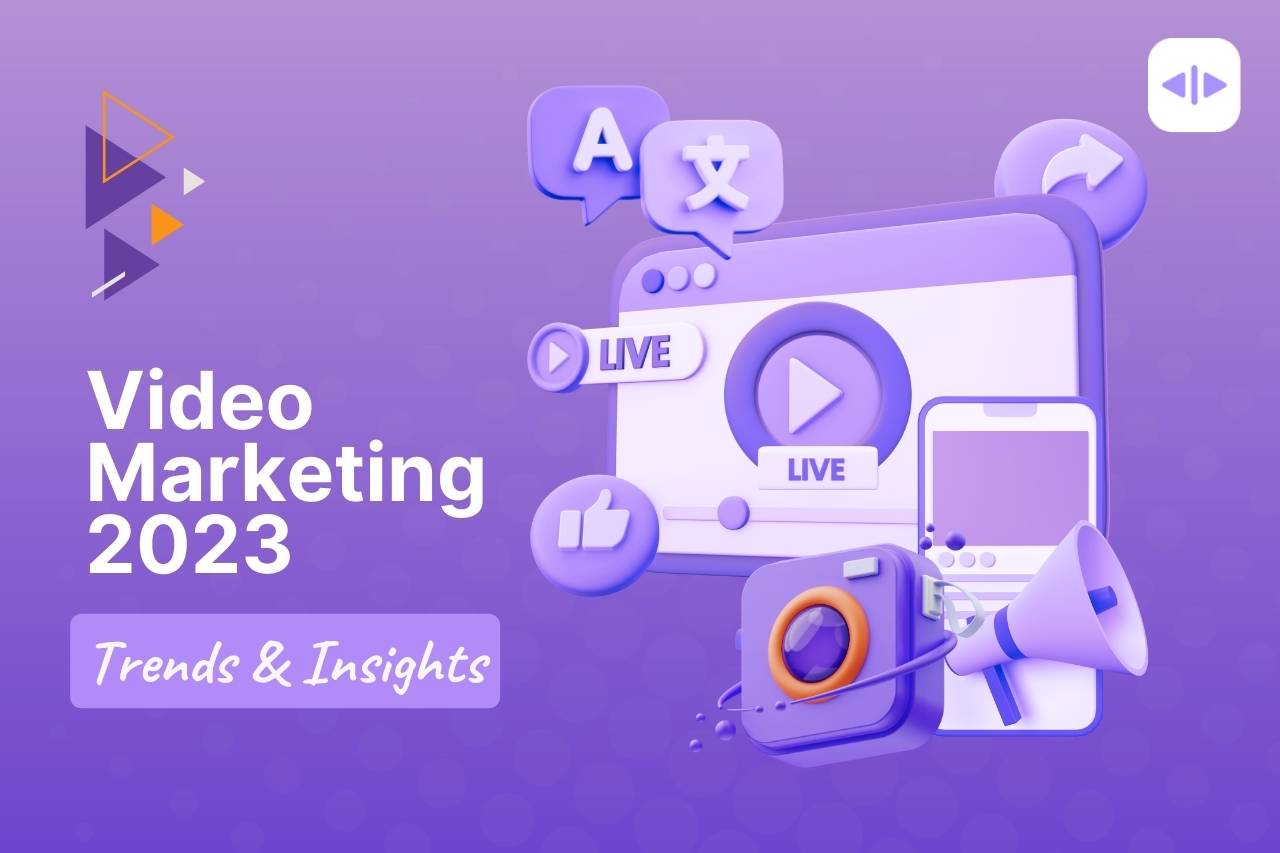Did you know that by 2023, video traffic is expected to account for 82% of all consumer Internet traffic? As a marketer, this is a statistic you can’t afford to ignore. Video has swiftly become an essential part of digital marketing strategy, and as the digital landscape evolves, so does the importance of video marketing. In this blog post, I’ll dive into the future of video content marketing, exploring key trends and content marketer predictions for 2023 and beyond.
Video Marketing: Dominating the Attention Economy
Video enables brands to communicate their message in a captivating, engaging, and interactive way. Here are some jaw-dropping stats that highlight the growing significance of video marketing:
- 85% of businesses use video marketing in 2023, up from 63% in 2017.
- Users spend 88% more time on websites with video, resulting in a 157% increase in organic search traffic.
- Video marketers get 66% more qualified leads per year than non-users.
- Adding video to an email can increase click-through rates by 200%-300%.
So, what will the future look like for video marketers? Here are five trends and content marketer predictions for 2023 and beyond.
Key Video Marketing Trends for 2023
1. Growth of Live Streaming
Live streaming and webinars allow marketers to engage with their audience in real-time, providing a more interactive experience than pre-recorded video content. From product demonstrations to Q&A sessions, live video offers a sense of authenticity that resonates with customers, giving brands an opportunity to showcase their expertise and nurture trust with their target audience. The future of video marketing will see continued growth in live streaming and webinars, with brands looking to interact personally with customers and boost overall engagement.
Live streaming has seen exponential growth in recent years, and this trend is only set to continue. According to Reports and Data, the global live streaming market is expected to reach $247.27 billion by 2027, growing at a CAGR of 24.8%. So, it’s time to embrace live streaming across social media channels, webinars, and more, to reach and engage your audience in real-time.
2. Short-form Video Content Domination
TikTok’s explosive rise in popularity is evidence that short-form video content is taking over digital marketing. With Instagram and YouTube following suit with their Reels and Shorts, short-form video content is here to stay as a dominant trend for 2023 and beyond.
TikTok, Instagram Reels, and YouTube Shorts have disrupted the traditional media landscape, captivating audiences who prefer bite-sized, easily-digestible content. As attention spans continue to shorten, marketers should prioritize the creation of short-form video content that can be quickly consumed and shared-a must for any brand looking to stay relevant in the digital age.
3. Adoption of Immersive Experiences with AR and VR
Augmented Reality (AR) and Virtual Reality (VR) will play a significant role in the future of video content marketing, providing immersive experiences that are engaging and interactive. In fact, the global AR and VR market is expected to surpass $180 billion by 2028.
Social Media Video Trends 2023
Social media has become a powerful tool for video marketing, with platforms like Facebook, Instagram, Twitter, and LinkedIn constantly evolving to prioritize video content. Video provides a dynamic, expressive format that encourages social sharing and helps brands build trust and develop stronger connections with their audience. In the coming years, video marketing on social media will become an even more critical aspect of marketing strategies, with businesses leveraging the power of stirring stories, captivating visuals, and user-generated content to foster loyalty and drive conversions.
In fact, 96% of marketers continue to value video as an ‘important part’ of their marketing strategy in 2022.
1. Video-First Platforms
Following the success of platforms like TikTok, we will see more social media platforms adopting a video-first approach. In a video-first platform, user interaction and content sharing will revolve around video and may incorporate features like auto-play, video content curation, and seamlessly integrated live streaming. In fact, 91% of businesses use video as a marketing tool in 2023.
2. Social Commerce with Video
Shopping and social media are converging, with video content playing a critical role in the social commerce experience. Consumers will increasingly view video product demos, reviews, and “unboxing” videos to make informed purchase decisions. This shift is supported by the fact that 68% of people say they prefer to learn about new products through video, rather than reading text-based articles.
The Future of Digital Marketing 2025
1. Personalization with AI and Machine Learning
Artificial Intelligence (AI) and Machine Learning will continue to revolutionize digital marketing by enabling extreme personalization. With AI-driven algorithms, marketers can predict consumer behaviors and preferences, delivering video content tailored to each user’s journey.
2. Exponential Increase in Interactive Video Content
Interactive and shoppable video content allows for a more immersive and seamless shopping experience, reducing barriers to purchase and helping to increase conversion rates. E-commerce brands can utilize shoppable videos to showcase product features, provide tutorials or offer personalized product recommendations.
As consumers increasingly value convenience and streamlined purchasing experiences, interactive video content, such as shoppable videos, quizzes, and gamified experiences, are poised to become a necessary component of video marketing campaigns and will see an exponential increase in the coming years.
This engaging video format encourages active participation from viewers, leading to longer watch times and higher conversion rates. As technology advances, expect to see even more interactive elements incorporated into video content.
Video Production Trends 2023
1. Vertical Video and Mobile-First Approach
As mobile devices become the primary tool for content consumption, video production will shift towards a mobile-first approach. This means more vertical videos will be produced to optimize content for better viewing experience on mobile screens.
2. Increased Demand for High-Quality Video Production
With the rise of video marketing, audiences will expect higher-quality content that sets brands apart from the competition. Expect to see more investment in professional video production, including advanced camera equipment, editing software, and creative storytelling techniques to capture viewers’ attention and keep them engaged.
3. The Rise of Video in Employee and Customer Training

Video is becoming an increasingly popular medium for employee training and customer education. Dynamic videos facilitate better information retention and allow users to revisit content at their own pace, ensuring a more effective and efficient training process. This trend is expected to continue in the future, as businesses adopt video training methods to streamline onboarding processes, convey brand messaging, and empower employees and customers with the know-how to succeed.
4. The Rise of Localization: Video Dubbing and Subtitling

As OTT platforms and the demand for multi-language content continue to grow, video production trends are focusing on localization. The market for dubbing and translating content into multiple languages is projected to grow by 50%. YouTube has also introduced a multilingual audio track feature, enabling videos to be viewed in different languages simultaneously, which will further accelerate the drive to build a multilingual world.
Creators are increasingly adding subtitles to their videos, and dubbing video content into various languages is becoming the new norm. AI-powered tools are driving the efficiency and expansion of localization.
Staying Ahead of the Curve
The future of video content marketing will be shaped by new technologies and evolving audience preferences. By staying informed about these trends and adapting their marketing strategies accordingly, marketers can capitalize on the power of video to engage and convert consumers for years to come. So, whether you’re preparing to launch your first video marketing campaign or looking to refine your existing efforts, keep these trends in mind for a successful video marketing strategy and a brighter future in the digital age.


